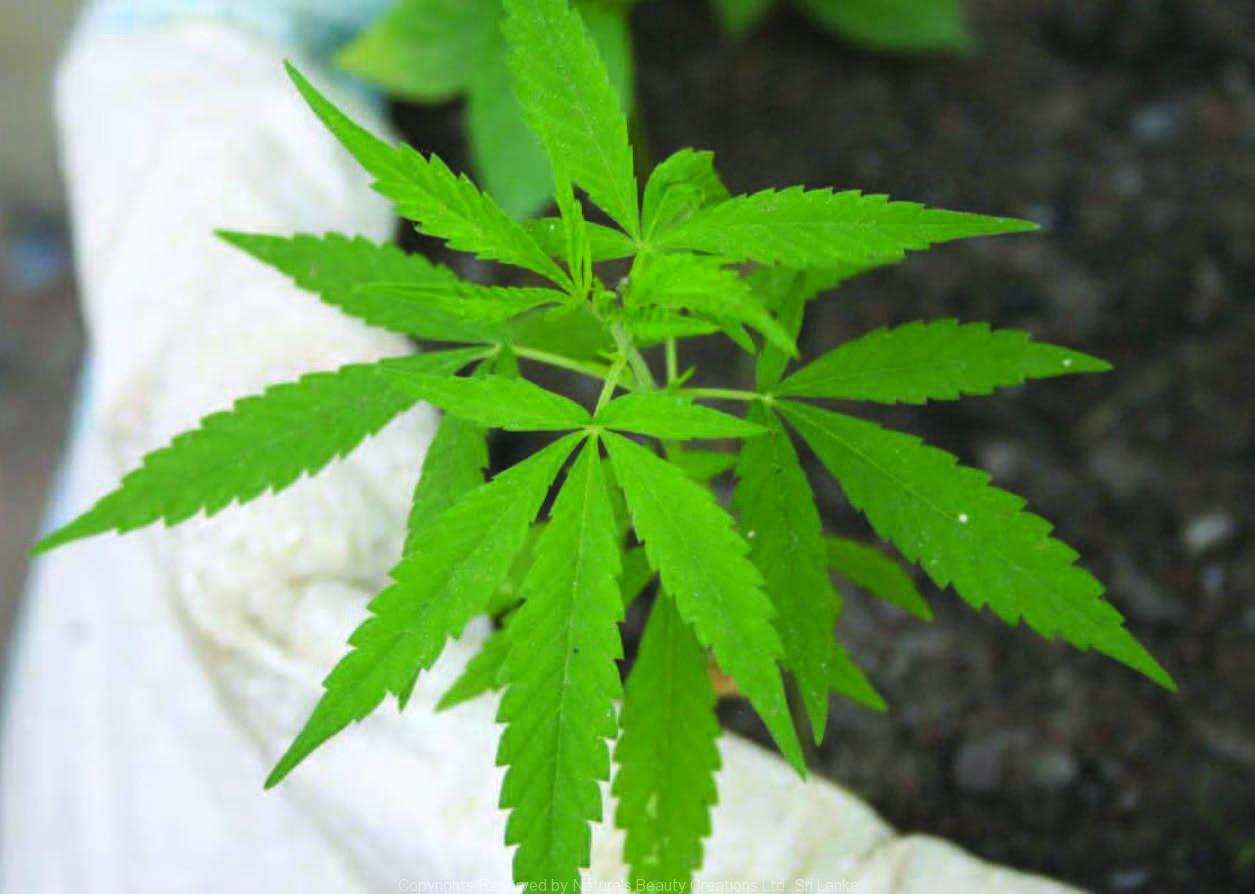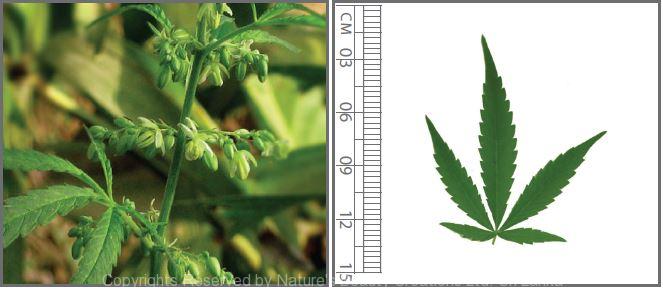

Traditional Knowledge
Useful plant parts :
Whole plant, flowering tops of the female plant and leaf
Uses in traditional medicine :
- Flowering tops are used as a narcotic
- Leaf juice is taken to treat cough, asthma, dropsy, diarrhoea, dysentery, piles, neuralgia and migraine
- Infusion of female plant is used to treat malaria, blood poisoning, dysentery and snake bites
Scientific Research
Chemical constituents:
Cannabinoid derivatives: tetrahydrocannabinol, tetrahydrocannabinolic acid, cannabigerol, cannabinol, cannabidiol, cannabidiolic acid, cannflavin A and B from flowers; pentacyclic triterpenes: friedelin, epifriedelanol from roots
Bioactivity :
Cannabinoids: block the release of K+ from the hippocampus caused by afferent stimulation, neuroprotective, antioxidative, antiapoptotic effects against β-amyloid peptide toxicity
Clinical:
Ingredient of the drug, ‘Cannabidiol’ used as an alternative treatment for schizophrenic patients; Standardized plant extract lowers spasm frequency and increases mobility in multiple sclerosis patients; Oral administration of the extract was useful for the patients with cancer-related anorexiacachexia syndrome
Note :
Listed as a narcolic plant in Sri Lanka
References : Choi, Y. H. et al., (2004), NMR assignments of the major cannabinoids and cannabiflavonoids isolated from flowers of Cannabis sativa, Phytochemical Analysis, 15(6), 345-354. Iuvone, T. et al., (2004), Neuroprotective effect of cannabidiol, a non-psychoactive component from Cannabis sativa, on Izquierdo, I. et al., (1973), Effect of cannabidiol and of other Cannabis sativa compounds on hippocampal seizure discharges, Psychopharmacol- ogy, 28(1), 95-102. Slatkin, D. J. et al., (1971), Chemical constituents of Cannabis sativa L. Root, Journal of Pharmaceutical Sciences, 60(12), 1891-1892. Strasser, F. et al., (2006), Comparison of Orally Administered Cannabis Extract and Delta-9-Tetrahydrocannabinol – in Treating Patients With Cancer Related Anorexia-Cachexia Syndrome: A Multicenter, Phase III, Randomized, Double-Blind, Placebo-Controlled Clinical Trial From the Cannabis-In-Cachexia-Study-Group, Journal of Clinical Oncology, 24(21), 3394-3400. Vaney, C. et al., (2004), Efficacy, safety and tolerability of an orally administered cannabis extract in the treatment of spasticity in patients with multiple sclerosis: a randomized, double-blind, placebo-controlled, crossover study, Multiple Sclerosis Journal, 10(4), 417-424. Zuardi, A.W. et al., (2006), Cannabidiol, a Cannabis sativa constituent, as an antipsychotic drug, Brazilian Journal of Medical and Biological Research, 39(4), 421-429.
β-amyloid-induced toxicity in PC12 cells, Journal of Neurochemistry, 89(1), 134-141.
Copyrights Reserved By
Natures Beauty Creations



